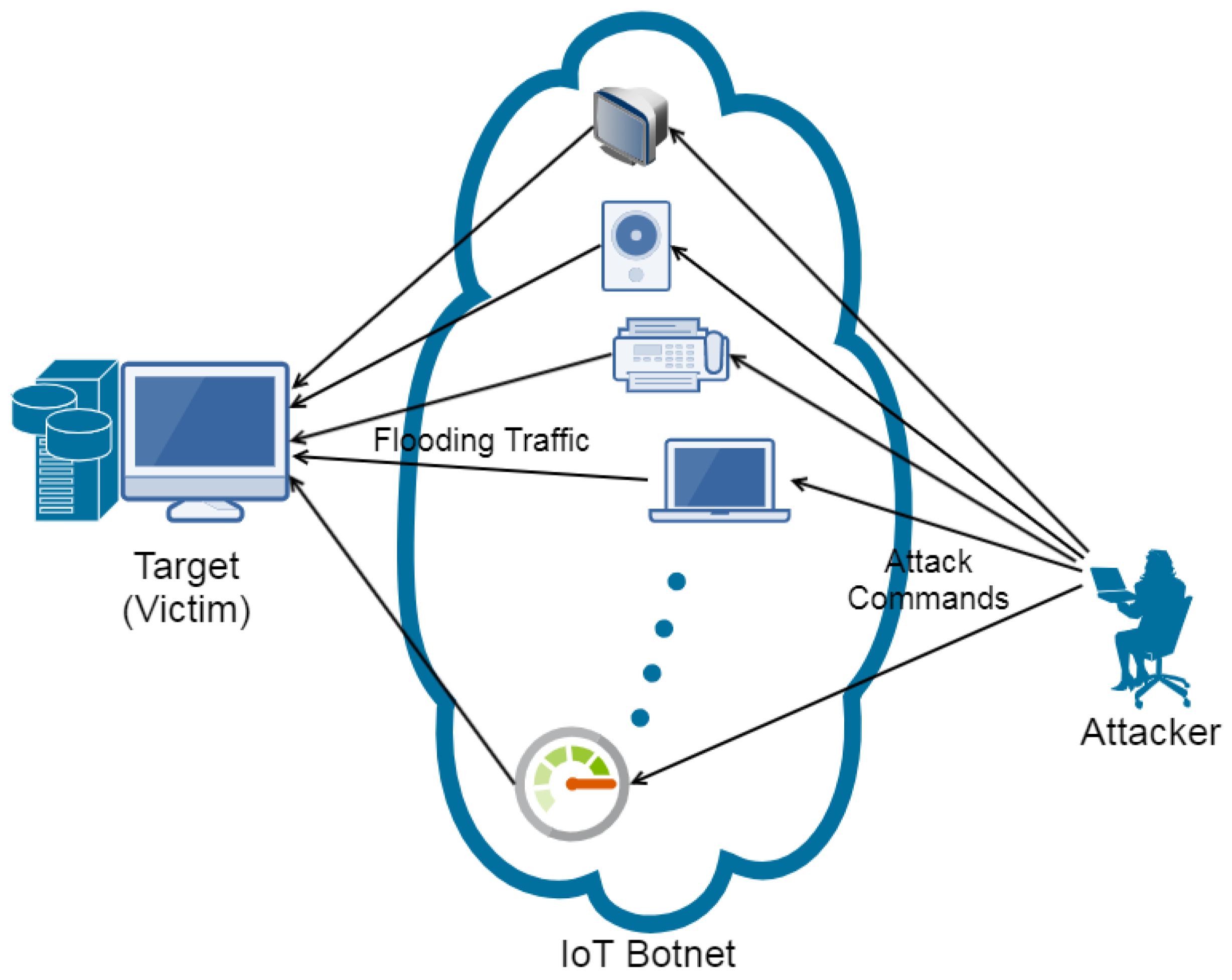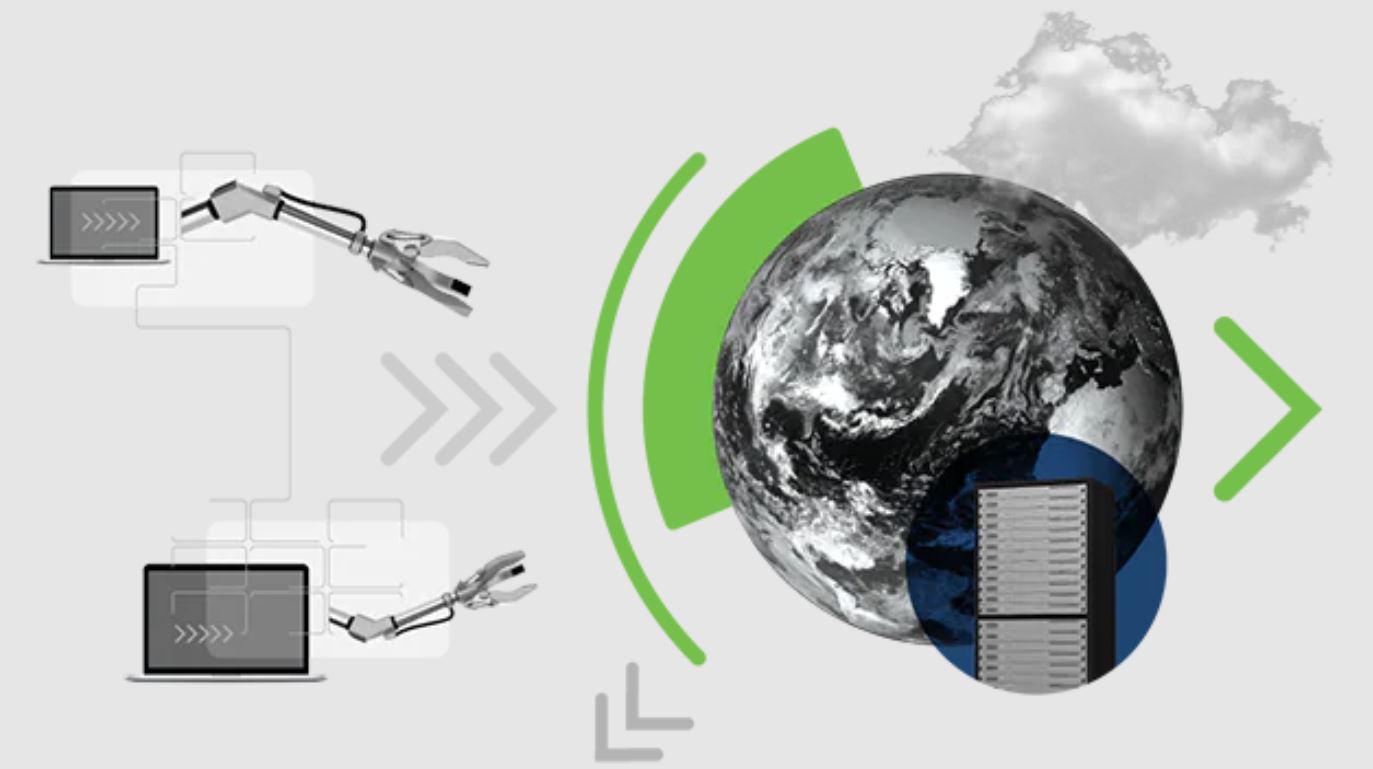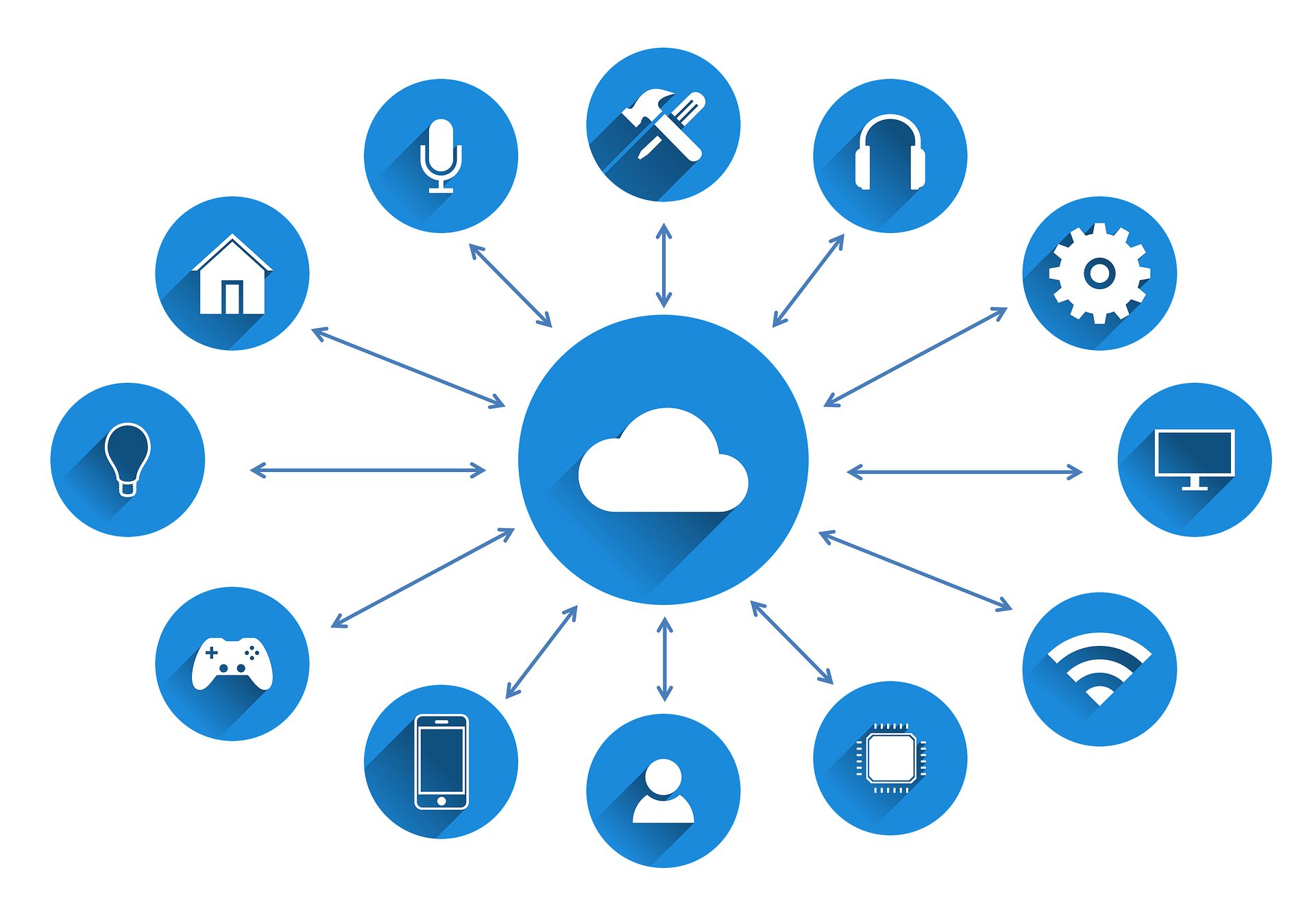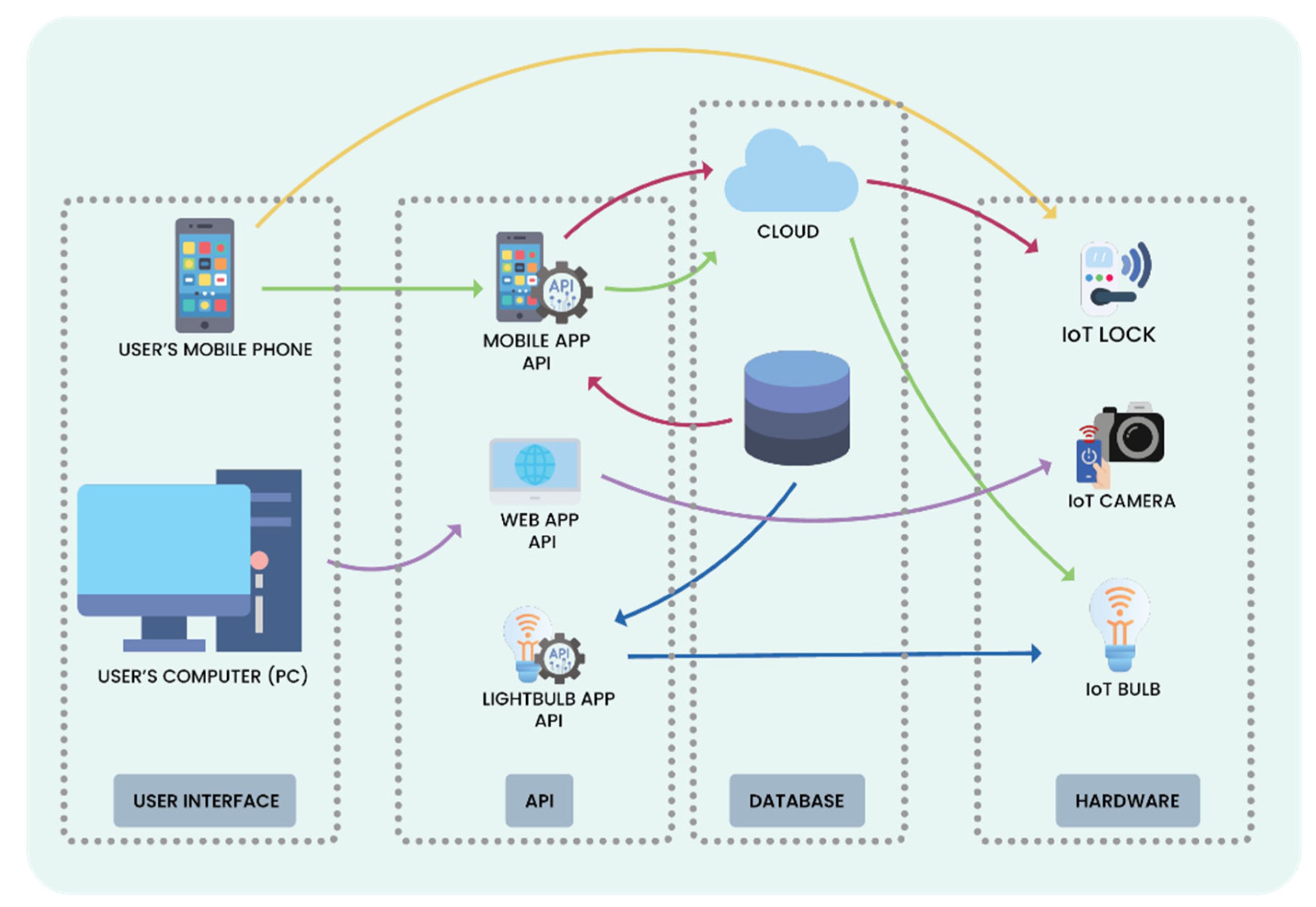Introduction
The advancement of technology has brought about numerous benefits and conveniences, particularly with the rise of the Internet of Things (IoT). This interconnected network of devices has revolutionized the way we live and interact with the world around us. However, as with any innovation, there are potential risks that come along with it. One such risk is Distributed Denial of Service (DDoS) attacks, which can have a significant impact on both individuals and businesses.
A DDoS attack occurs when a network or website is flooded with an overwhelming amount of traffic, rendering it inaccessible to legitimate users. Typically, these attacks are executed by a group of compromised devices, often referred to as a botnet, which are under the control of cybercriminals. The objective of these attacks is to disrupt the normal functioning of a target system by overwhelming its resources.
The Internet of Things, on the other hand, refers to the network of interconnected devices that communicate with each other and the internet. These devices range from everyday household items like smart thermostats and fitness trackers to industrial machinery and infrastructure systems. The IoT has the potential to greatly enhance efficiency, convenience, and productivity. However, it also introduces additional entry points for cybercriminals to exploit.
With the proliferation of IoT devices, the potential attack surface for DDoS attacks has exponentially increased. IoT devices are often equipped with minimal security measures and are usually connected to the internet with default or weak passwords. This makes them an easy target for cybercriminals looking to build botnets and launch DDoS attacks.
This article will delve into the relationship between DDoS attacks and the Internet of Things, exploring the vulnerabilities in IoT devices that make them susceptible to such attacks. Furthermore, we will examine real-life examples of IoT-related DDoS attacks and the impact they have had. Finally, we will discuss strategies to protect against these attacks and mitigate the potential damages.
What is DDoS?
Distributed Denial of Service (DDoS) is a type of cyber attack that aims to disrupt the normal functioning of a network, website, or online service by overwhelming it with a massive amount of malicious traffic. Unlike traditional DoS (Denial of Service) attacks, which are executed from a single source, DDoS attacks involve multiple sources, often referred to as a botnet.
In a DDoS attack, the attacker uses compromised computers, servers, or IoT devices to flood the targeted network or website with an enormous volume of traffic. This flood of traffic overwhelms the system’s resources, such as bandwidth, server capacity, or processing power, rendering it unable to respond to legitimate requests.
DDoS attacks can target various layers of the network stack, such as the application layer, transport layer, or network layer. Application layer attacks, also known as Layer 7 attacks, focus on exploiting vulnerabilities in the application or service itself, consuming server resources and causing performance degradation. Transport layer attacks, known as Layer 4 attacks, aim to flood the target’s network with a high volume of packets, consuming bandwidth and disrupting network connectivity. Network layer attacks, or Layer 3 attacks, typically involve overwhelming the target’s network infrastructure, such as routers or switches, with a massive amount of traffic.
The motives behind DDoS attacks can vary. Some attackers may carry out DDoS attacks as a form of protest or activism, targeting organizations or websites they perceive as unethical or controversial. Others may launch DDoS attacks to create chaos, disrupt competitors’ services, or even as a diversionary tactic to mask other malicious activities, such as data breaches.
DDoS attacks pose significant risks to individuals and businesses, causing financial losses, reputational damage, and potential legal ramifications. They can result in extended periods of downtime, leading to disrupted operations, loss of revenue, and frustrated customers.
As technology continues to advance and cybercriminals become more sophisticated, the scale and complexity of DDoS attacks continue to evolve. Therefore, it is imperative to implement robust security measures and proactive mitigation strategies to defend against these malicious threats.
What is the Internet of Things (IoT)?
The Internet of Things (IoT) refers to the network of interconnected devices embedded with sensors, software, and connectivity capabilities, enabling them to exchange data and interact with each other via the internet. These devices can range from everyday household objects, such as smart thermostats, wearable fitness trackers, and voice-activated virtual assistants, to industrial machinery, medical devices, and infrastructure systems.
The core concept of the IoT revolves around the idea of creating a seamlessly interconnected ecosystem of devices that can share information and perform actions autonomously, without the need for human intervention. This interconnectedness allows for increased efficiency, improved decision-making, and enhanced convenience in various aspects of our lives.
IoT devices collect and exchange vast amounts of data through sensors, which can include anything from temperature, humidity, and motion to location, light, and sound. These devices communicate with each other and with other systems, using wired or wireless networks, such as Wi-Fi, Bluetooth, or cellular networks.
The applications of IoT are diverse and encompass various sectors, including smart homes, agriculture, healthcare, transportation, manufacturing, and energy management. In a smart home, for example, IoT devices can be used to control lighting, heating, and security systems, and even appliances such as refrigerators and washing machines.
IoT technology has the potential to revolutionize numerous industries by providing greater visibility, efficiency, and automation. It enables businesses to gather real-time data, analyze it, and make informed decisions based on actionable insights. For example, in agriculture, IoT devices can monitor soil moisture levels and notify farmers when irrigation is needed, optimizing water usage and increasing crop yields.
However, along with the benefits, the proliferation of IoT devices also raises concerns regarding privacy, security, and data protection. Many IoT devices lack robust security measures, making them vulnerable to hacking and exploitation. The vast amount of data generated by these devices also poses challenges in terms of data privacy, storage, and analysis.
As the IoT continues to evolve and become more integrated into our daily lives, it is essential to prioritize security and privacy measures to protect both individuals and businesses from potential threats. These measures include implementing strong encryption, regularly updating firmware, and practicing network segmentation to isolate IoT devices from other critical systems.
How are DDoS attacks related to IoT?
DDoS attacks and the Internet of Things (IoT) have a significant relationship due to the vulnerabilities present in IoT devices. IoT devices often lack robust security measures, making them prime targets for cybercriminals looking to build massive botnets and launch DDoS attacks.
One of the main reasons why IoT devices are susceptible to being compromised and used in DDoS attacks is their widespread adoption and rapid growth. With the increasing number of IoT devices being connected to the internet, the potential attack surface for cybercriminals expands exponentially. These devices, ranging from smart home appliances to industrial machinery, are often equipped with default or weak passwords, making them easy targets for attackers to gain unauthorized access.
Another factor that contributes to the relationship between DDoS attacks and IoT is the limited processing power and bandwidth of IoT devices. Unlike traditional computing devices, such as PCs or servers, IoT devices are often resource-constrained, designed to perform specific tasks with minimal computing power. This constraint makes them more vulnerable to being overwhelmed by a massive influx of traffic generated during a DDoS attack.
Furthermore, IoT devices are constantly connected to the internet, collecting and transmitting data. This persistent network connection provides a continuous opportunity for attackers to infiltrate and control these devices, incorporating them into botnets without the knowledge of the device owners. Once part of a botnet, these compromised IoT devices can be utilized to execute large-scale DDoS attacks against specific targets.
Moreover, the sheer number of interconnected IoT devices makes it challenging to detect and mitigate DDoS attacks effectively. Traditional defense mechanisms, such as firewalls and intrusion detection systems, may not be capable of handling the immense volume of traffic generated during an IoT-related DDoS attack. This can lead to extended periods of downtime and significant disruptions for targeted networks or websites.
Overall, the relationship between DDoS attacks and IoT devices is a result of the vulnerabilities present in IoT technology. The widespread adoption and lack of robust security measures in these devices make them attractive targets for cybercriminals, who leverage them to create powerful botnets capable of launching devastating DDoS attacks.
In the next section, we will explore the vulnerabilities present in IoT devices that make them susceptible to being compromised and used in DDoS attacks.
Vulnerabilities in IoT devices
IoT devices, with their widespread adoption and rapid growth, present inherent vulnerabilities that make them attractive targets for cybercriminals. These vulnerabilities stem from various factors, including weak security measures, lack of updates and patches, and the diverse range of IoT device manufacturers.
One of the primary vulnerabilities in IoT devices is the prevalence of default or weak passwords. Many IoT devices come with factory-set default passwords that are often widely known or easily guessable. This leaves the devices vulnerable to brute force attacks, where attackers systematically try different combinations of usernames and passwords until they gain unauthorized access. Additionally, user negligence in changing default passwords or using weak passwords further exacerbates this vulnerability.
Another vulnerability lies in the lack of regular updates and patches for IoT devices. Manufacturers may not prioritize security updates or may not have a mechanism in place to push updates to devices once they are sold. This leaves IoT devices running outdated and potentially vulnerable software, making them easy targets for exploitation.
The vast diversity of IoT device manufacturers also contributes to the vulnerabilities present in these devices. With numerous manufacturers producing IoT devices, there is a lack of standardized security practices and protocols. Manufacturers have varying levels of expertise and resources when it comes to implementing robust security measures. As a result, some IoT devices may have weaker security features or even contain pre-existing vulnerabilities due to rushed development or inadequate testing.
Furthermore, IoT devices often lack built-in security features or have limited computational power, making it challenging to implement robust security measures. As a result, these devices may not have the necessary protections in place to defend against various types of attacks, including DDoS attacks.
Additionally, IoT devices are typically designed for simplicity and ease of use, prioritizing convenience over security. These devices may lack essential security features, such as encryption or secure communication protocols, leaving them more susceptible to unauthorized access or data interception.
The interconnected nature of IoT devices also opens up potential attack vectors. If one IoT device within a network gets compromised, it can serve as a gateway for attackers to gain access to other devices or the entire network. This interconnectedness amplifies the impact of vulnerabilities and increases the potential for large-scale attacks such as DDoS.
To address these vulnerabilities, it is crucial for both device manufacturers and device owners to prioritize security. Manufacturers need to implement robust security measures during the development and production stages, including strong default passwords, regular updates and patches, secure communication protocols, and encryption. Device owners should also take responsibility for securing their IoT devices by changing default passwords, keeping devices updated, and segmenting their network to isolate IoT devices from critical systems.
In the next section, we will explore how attackers leverage IoT devices in DDoS attacks.
DDoS attacks leveraging IoT devices
The proliferation of Internet of Things (IoT) devices has opened up new opportunities for cybercriminals to launch devastating Distributed Denial of Service (DDoS) attacks. By compromising IoT devices, attackers can leverage their collective power to create botnets and execute large-scale DDoS attacks.
Once a cybercriminal gains control of an IoT device, they can use malware or exploit existing vulnerabilities to turn it into a part of a botnet. Botnets consist of thousands or even millions of infected devices, which can then be commanded to flood a target network or website with malicious traffic. The sheer volume of traffic overwhelms the target’s resources, rendering legitimate users unable to access the targeted service.
One of the main advantages of using compromised IoT devices in DDoS attacks is the large attack surface they offer. With the increasing number of IoT devices connected to the internet, attackers have a vast pool of potential targets to exploit. This allows them to harness the collective power of numerous IoT devices to amplify the impact of their DDoS attacks.
Moreover, IoT botnets are particularly attractive to attackers due to the limited security measures often found on these devices. Weak or default passwords, lack of regular updates, and vulnerabilities in the firmware make it easier for cybercriminals to gain unauthorized access and control over IoT devices. Once compromised, these devices can be added to the botnet without the knowledge of their owners.
Attackers can also employ various techniques to disguise the malicious traffic coming from the IoT devices, making it harder to detect and mitigate the attack. For example, they may distribute the attack traffic across different IP addresses, use encryption techniques, or mimic legitimate user behavior to bypass security systems.
Another aspect that makes DDoS attacks leveraging IoT devices more challenging to defend against is the diversity of these devices. IoT devices come from various manufacturers, each with their unique software, communication protocols, and security features. This fragmented landscape makes it difficult to implement standardized defense mechanisms and mitigation strategies.
Furthermore, the large and constantly growing number of IoT devices makes it challenging to identify and pinpoint the specific source of attack traffic. Traditional defense mechanisms, such as firewalls and intrusion detection systems, may struggle to distinguish between legitimate IoT device traffic and malicious traffic generated by a botnet.
Overall, cybercriminals exploit the vulnerabilities present in IoT devices to build powerful botnets that can launch devastating DDoS attacks. This highlights the importance of implementing robust security measures on IoT devices, including strong password policies, regular updates, and patches, and network segmentation to isolate IoT devices from critical systems.
In the next section, we will examine some famous examples of DDoS attacks that have leveraged IoT devices.
Famous examples of IoT-related DDoS attacks
The rise of the Internet of Things (IoT) has seen a significant increase in DDoS attacks that leverage compromised IoT devices. Several high-profile incidents serve as a stark reminder of the potential impact and scale of IoT-related DDoS attacks.
One notable example is the Mirai botnet attack that occurred in 2016. The Mirai botnet, created by infecting vulnerable IoT devices, such as home routers, IP cameras, and digital video recorders, was responsible for one of the largest DDoS attacks ever recorded. The attack targeted Dyn, a major DNS provider, resulting in widespread service disruptions for popular websites like Twitter, Reddit, and Netflix. The Mirai botnet demonstrated the power of compromising IoT devices and highlighted the urgent need for better security measures in these devices.
Another significant IoT-related DDoS attack was the attack on the French web host OVH in 2016. The attack generated a remarkable 1.1 terabits per second (Tbps) of traffic, making it one of the largest DDoS attacks recorded at that time. The attackers utilized a botnet comprised of tens of thousands of infected IoT devices, mainly CCTV cameras, to overwhelm OVH’s infrastructure. The incident underscored the destructive potential of compromised IoT devices in launching devastating DDoS attacks.
In 2018, the Satori botnet caused widespread disruption by targeting vulnerabilities in Huawei routers. The botnet exploited a vulnerability called CVE-2017-17215 to gain control over the routers and launched DDoS attacks against various targets. The Satori botnet emphasized the need for prompt security updates and patches for IoT devices to mitigate the risk of exploitation.
One of the most recent and notorious IoT-related DDoS attacks is the attack on the KrebsOnSecurity website in 2016. The attack, estimated at 620 Gbps in size, was orchestrated using the Mirai botnet and resulted in one of the largest DDoS attacks ever recorded at the time. This attack raised widespread alarm regarding the potential for IoT devices to be used as powerful weapons in cyber warfare.
These examples highlight the real-world consequences of IoT-related DDoS attacks. They demonstrate the disruptive potential of compromised IoT devices and the need for improved security measures across all IoT devices. As the number of IoT devices continues to grow, it is paramount that manufacturers and users prioritize security, implement strong password policies, keep devices updated, and employ effective network monitoring and defense mechanisms to detect and mitigate potential threats.
In the next section, we will explore the impact that IoT-related DDoS attacks can have on individuals and businesses.
Impact of IoT-related DDoS attacks
IoT-related Distributed Denial of Service (DDoS) attacks can have significant impacts on individuals, businesses, and even society as a whole. The consequences of these attacks can range from financial losses and reputational damage to broader disruptions in critical services and infrastructure.
One of the key impacts of IoT-related DDoS attacks is the disruption of online services. When a website or online service is targeted and overwhelmed with attack traffic, it becomes inaccessible to legitimate users. This can result in extended periods of downtime, leading to frustrated customers, loss of revenue, and damage to a company’s reputation.
For businesses, especially those heavily reliant on online operations, the financial consequences of IoT-related DDoS attacks can be substantial. The costs associated with mitigating an attack, implementing additional security measures, and restoring services can be significant. Additionally, the potential loss of customer trust and loyalty can have long-lasting effects on a business’s bottom line.
IoT-related DDoS attacks can also have far-reaching impacts on critical infrastructure systems. Utilities, transportation networks, and healthcare facilities increasingly rely on interconnected IoT devices to monitor and control operations. Disruptions caused by DDoS attacks can compromise the functionality of these systems, leading to potential service outages, safety concerns, and even public health risks.
Individuals are not immune to the consequences of IoT-related DDoS attacks either. If an individual’s IoT device is compromised and used in a botnet, their personal information and privacy could be at risk. Hackers may gain unauthorized access to sensitive data or use the compromised device as a launching pad for further cyber attacks, potentially leading to identity theft or financial losses.
Furthermore, the impact of IoT-related DDoS attacks is not limited to immediate disruptions. The long-term consequences can include increased skepticism and reduced confidence in the security of IoT devices and the overall IoT ecosystem. Such concerns may hinder the widespread adoption of IoT technology, slowing down its potential benefits in various industries.
To mitigate the impact of IoT-related DDoS attacks, organizations and individuals must prioritize security measures. This includes implementing strong password policies, keeping devices updated with the latest patches and firmware, regularly monitoring network traffic for suspicious activity, and employing robust defense mechanisms that can detect and mitigate attacks in real-time.
In summary, IoT-related DDoS attacks can have severe repercussions on individuals, businesses, and critical infrastructure. It is crucial to recognize the potential risks, take proactive measures to secure IoT devices, and employ effective defenses to mitigate the impact of these attacks on both a micro and macro scale.
Protecting against IoT-related DDoS attacks
Protecting against IoT-related Distributed Denial of Service (DDoS) attacks requires a multi-layered approach that encompasses both device manufacturers and device owners. By implementing robust security measures, staying informed about potential vulnerabilities, and adopting best practices, individuals and organizations can greatly reduce the risk of falling victim to IoT-related DDoS attacks.
For device manufacturers, prioritizing security during the development and production stages is crucial. This includes incorporating strong default passwords that urge users to set unique and complex passwords upon initial setup. Regular security updates and patches should be provided to address any discovered vulnerabilities and keep devices protected from emerging threats. Manufacturers should also follow security-by-design principles, making security an integral part of the development process rather than an afterthought.
Device owners can take several steps to protect their IoT devices from being compromised and used in DDoS attacks:
- Change default passwords: Immediately change default passwords on all IoT devices and use strong, unique passwords. Avoid using common or easily guessable passwords.
- Keep devices updated: Regularly check for software updates and apply them promptly. These updates often contain critical security patches that address known vulnerabilities.
- Disable unnecessary features: Disable any unnecessary features or services on IoT devices to minimize the attack surface. Only enable functionalities that are essential to your needs.
- Implement network segmentation: Create separate networks or VLANs for IoT devices, isolating them from critical systems. This helps contain any potential attacks and prevents attackers from moving laterally within the network.
- Use a firewall: Install a firewall, either through a dedicated device or on your home router, to filter incoming and outgoing network traffic. Configure it to restrict access to IoT devices from external networks.
- Employ intrusion detection and prevention systems: Implement intrusion detection and prevention systems that can monitor network traffic for any signs of suspicious or malicious activity.
- Regularly monitor network traffic: Stay vigilant and monitor your network for any unusual or abnormal activity that may indicate a compromised IoT device.
Additionally, individuals and organizations should follow general cybersecurity best practices, such as regularly updating and patching all software, using reputable antivirus and anti-malware software, and educating themselves about the latest threats and attack techniques. Regularly backing up important data and implementing a robust incident response plan can also help mitigate potential damages caused by IoT-related DDoS attacks.
Collaboration among industry stakeholders, such as device manufacturers, cybersecurity experts, and policymakers, is crucial to establishing standards and guidelines for secure IoT device development and deployment. By working together, industry-wide efforts can help ensure that IoT devices are built with security in mind, making it more challenging for cybercriminals to exploit their vulnerabilities.
Ultimately, protecting against IoT-related DDoS attacks requires a proactive approach involving both manufacturers and users. By implementing comprehensive security practices and staying informed about emerging threats, individuals and organizations can minimize the risk of their IoT devices being compromised and used in potentially devastating DDoS attacks.
Conclusion
The Internet of Things (IoT) has brought numerous benefits and conveniences to our lives, but it has also introduced new vulnerabilities and risks, with one of the most significant being Distributed Denial of Service (DDoS) attacks. These attacks leverage compromised IoT devices to create powerful botnets that can overwhelm networks and websites with malicious traffic, causing disruptions and financial losses.
The relationship between DDoS attacks and IoT devices is intertwined. The vulnerabilities present in IoT devices, such as weak security measures and default passwords, make them prime targets for cybercriminals. The limited processing power and diverse range of manufacturers also contribute to the relationship, making it easier for attackers to gain unauthorized control over these devices.
Several famous examples of IoT-related DDoS attacks highlight the real-world impact and consequences of these attacks. They serve as a reminder of the need for robust security measures to protect both individuals and businesses from potential damages and disruptions.
To protect against IoT-related DDoS attacks, it is important for both device manufacturers and device owners to prioritize security. Manufacturers should implement strong security measures from the design stage, while device owners should change default passwords, keep devices updated, and implement network segmentation to isolate IoT devices from critical systems. General cybersecurity best practices should also be followed, including regular updates, network monitoring, and education on emerging threats.
Furthermore, collaboration among industry stakeholders is essential to establish standards and guidelines for secure IoT device development and deployment. By working together, the industry can ensure that IoT devices are built with robust security measures, minimizing the potential for exploitation.
As technology continues to advance and more IoT devices are integrated into our lives, it is crucial to stay vigilant and proactive in protecting against IoT-related DDoS attacks. By implementing comprehensive security practices and staying informed, we can mitigate the risks and enjoy the benefits of IoT technology securely.

























